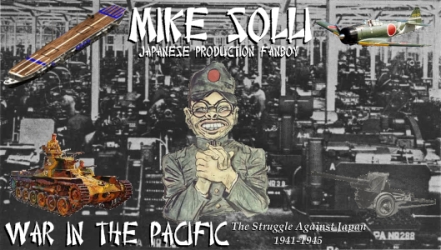LargeSlowTarget
Posts: 4443
Joined: 9/23/2000
From: Hessen, Germany - now living in France
Status: offline

|
quote:
ORIGINAL: Feinder
quote:
LST - Did the Japanese had to face multiple strikes of 150+ 4E bombers almost every day, who flatten even air big bases in one single attack despite all-out defense efforts - in 1942? I don't think so - but JFB's have to face them!
While I do enjoy each and every one of your posts LST (for purly testosterone related reasons), I'll just point out that -
Actually, the Japanese -did- face strikes by "only" a 10 - 20 B-17s every day, and that -few- number managed to not only close Rabaul, but keep it under thumb afterwards.
Try doing THAT in WitP.

-F-
Sorry for the 'angry' tone in my last post, but I had just received a turn and I had to witness a 160+ B-24 raid on Bangkok which decimated 8 groups of Tonies (exp 60 -70) from full strength to an average of 8 planes per group and destroyed a level 7 airbase - in a single attack...
I do not concurr with the 'only 10 - 20 B-17s a day to close Rabaul' statement. It took a much higher number of heavy bomber attacks plus medium and light plus fighter sweeps to neutralize Rabaul, and this was achieved only in early 44.
See http://www.ibiblio.org/hyperwar/USA/USA-P-Rabaul/index.html:
"Reducing Rabaul and Kavieng
All during the invasions of Arawe, Cape Gloucester, and Saidor, and during the discussions over the Bismarck Archipelago operations, the Solomons air command had been putting forth a maximum effort to reduce Rabaul. Completion of the Torokina fighter strip at Empress Augusta Bay, Bougainville, was a major step forward, for now New Georgia- and Guadalcanal-based bombers could have fighter escort in their attacks. But by the end of 1943 it was clear that high-level bombing would not suffice to neutralize Rabaul. Obviously, success depended on completion of the bomber strips by the Piva River (Piva Uncle and Piva Yoke).15
Piva Uncle, eight thousand feet by three hundred feet, was ready as a staging field on 30 December 1943. On 5 January 1944 SBD's and TBF's from Munda staged through to attack Rabaul, but by noon, when the bombers arrived over the target, Rabaul was as usual blanketed by heavy clouds. A similar attack two days later met the same difficulties, but on 9 January Piva Yoke was ready and from then on bombers could be permanently based at the Bougainville fields and could reach Rabaul in the morning, before it was covered by clouds.
Thereafter during January TBF's, SBD's, B-25's, and B-24's struck regularly at Rabaul. The Japanese lost many planes but occasionally received reinforcements from Truk, and continued to resist with fighter interception and antiaircraft fire. ". . . the skies overhead were the scene of continuous annihilation battles. . . ."
By the end of January heavy bombers had flown 263 sorties over Rabaul; B-25's, 180 sorties; SBD's, 368; TBF's, 227; fighters, 1,850. Losses totaled 8 B-24's, 14 B-25's, 8 SBD's, 5 TBF's, 19 P-38's, 37 F4U's, 5 F6F's, and 6 New Zealand P-40's.
Damage to Japanese equipment and weapons on the ground was relatively light, for in late November the enemy had begun the prodigious task of digging every possible item underground in Rabaul's volcanic rock, a task that was well along by January. But all buildings were knocked flat. Ships and grounded planes were especially vulnerable to low-level bombing and dive-bombing. By February 1944 the Allies had won a signal victory; Japanese surface ships stopped using the harbor."
_____________________________
|
 Printable Version
Printable Version












 Their squadrons should have impressive results
Their squadrons should have impressive results













 New Messages
New Messages No New Messages
No New Messages Hot Topic w/ New Messages
Hot Topic w/ New Messages Hot Topic w/o New Messages
Hot Topic w/o New Messages Locked w/ New Messages
Locked w/ New Messages Locked w/o New Messages
Locked w/o New Messages Post New Thread
Post New Thread